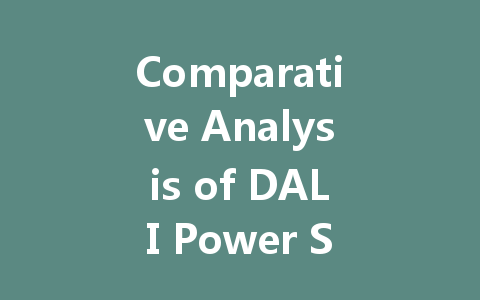In the world of smart lighting, two technologies have emerged as prominent choices for enhancing the user experience: DALI (Digital Addressable Lighting Interface) power supply and Zigbee. While both systems aim to provide better control over lighting solutions, they operate on different principles and serve distinct purposes. This article will explore the strengths and weaknesses of DALI and Zigbee, facilitating an informed decision on which one may be the best fit for your smart lighting needs.
Understanding DALI Power Supply
DALI is a standardized protocol primarily used for controlling lighting in professional environments, such as offices, schools, and commercial buildings. It enables communication between various lighting fixtures and control devices, allowing for precise dimming, switching, and scene setting.
Key Features of DALI
Exploring Zigbee Technology
Zigbee is a wireless communication protocol designed for low-power, low-data-rate applications, primarily in home automation environments. It creates a mesh network, allowing devices to communicate with each other seamlessly, which is particularly beneficial in smart home applications.
Key Features of Zigbee
Comparing Performance Characteristics
Control and Dimming Capabilities
When it comes to control and dimming capabilities, DALI excels due to its dedicated architecture for lighting control. Its two-way communication allows for precise dimming adjustments and status feedback, making it ideal for environments that require consistent lighting levels.
Zigbee, on the other hand, offers flexibility and ease of use. While it can effectively dim lights, the performance may not match the specialization found in DALI systems—especially in large commercial settings.
Complexity and Installation
DALI systems can be more complex to install due to intricate wiring and configuration needs. The system necessitates a structured setup, which may require professional installation.
Conversely, Zigbee’s wireless nature simplifies the installation process, allowing homeowners or installers to position devices without hassle. This characteristic makes Zigbee a preferred choice for DIY enthusiasts and residential settings.
Cost Considerations
Initial Investment and Long-Term Value
DALI technology may require a higher initial investment due to the cost of components and installation. However, its robust performance in commercial and professional applications can yield long-term value through energy savings and effective management of lighting systems.
In contrast, Zigbee systems typically entail lower initial costs, making them appealing for residential users or smaller projects. However, users may find the need for additional devices or hubs that could increase overall costs over time.
Use Cases: Where Each Technology Excels
DALI Applications
DALI is best suited for professional environments where control precision is critical. Such contexts include:
Zigbee Applications
Zigbee shines in home automation settings, including:
结论
Both DALI power supply and Zigbee offer distinct advantages tailored to different applications within the smart lighting spectrum. DALI is most effective for commercial and professional environments requiring high control precision and integration with lighting management systems. Conversely, Zigbee’s wireless flexibility and scalability make it the ideal solution for residential applications.
Ultimately, the choice between DALI and Zigbee boils down to specific needs—consider factors such as your environment, installation preferences, and overall budget to determine which technology will provide the best results for your smart lighting setup. Whether you prioritize control precision or ease of integration, both systems are poised to enhance your lighting experience significantly.
